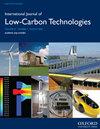Optimal placement of locally controlled voltage regulators in traditional distribution systems using the IMDE algorithm
IF 2.3
4区 工程技术
Q3 ENERGY & FUELS
引用次数: 0
Abstract
Abstract One of the main goals of the designers of the power systems is the reduction of extra systems costs. The main part of these costs is related to energy loss, and the methods for loss reduction significantly lead to a cost reduction. The voltage regulators (VRs) can be used along the distribution feeders and the improvement of the network voltage profile results in the loss reduction of the system. However, the important problem is the installation location of this equipment to have the most profitability with the lowest cost. In this paper, the optimal placement of the VRs along the distribution systems is performed using intersect mutation differential evolution algorithm. The method aims to reduce loss and the primary investment and maintenance of the VRs. To this aim, the studies are performed on two scenarios for two standard distribution systems with 33 and 69 buses. A genetic algorithm (GA) is also utilized for the VRs placement to validate the results. The results show that the VRs reduce the loss to about 15% of the maximum system load. Moreover, the improved differential evolution algorithm performs better than the GA and makes the objective function in the minimum value.基于IMDE算法的传统配电系统局部控制稳压器优化配置
摘要电力系统设计者的主要目标之一是降低额外的系统成本。这些成本的主要部分与能量损失有关,减少损失的方法显著降低了成本。电压调节器可以安装在配电馈线上,改善电网电压分布可以降低系统的损耗。然而,重要的问题是该设备的安装位置要以最低的成本获得最大的盈利能力。本文采用交叉突变差分进化算法对配电系统上的虚拟现实机进行优化配置。该方法旨在减少损失,减少虚拟现实的初级投资和维护。为此,研究在两种情况下进行,分别有33和69个总线的两个标准配电系统。利用遗传算法(GA)对VRs的放置进行验证。结果表明,VRs将损耗降低到系统最大负载的15%左右。改进的差分进化算法比遗传算法性能更好,使目标函数处于最小值。
本文章由计算机程序翻译,如有差异,请以英文原文为准。
求助全文
约1分钟内获得全文
求助全文
来源期刊

International Journal of Low-carbon Technologies
Engineering-Architecture
CiteScore
4.30
自引率
4.30%
发文量
106
审稿时长
27 weeks
期刊介绍:
The International Journal of Low-Carbon Technologies is a quarterly publication concerned with the challenge of climate change and its effects on the built environment and sustainability. The Journal publishes original, quality research papers on issues of climate change, sustainable development and the built environment related to architecture, building services engineering, civil engineering, building engineering, urban design and other disciplines. It features in-depth articles, technical notes, review papers, book reviews and special issues devoted to international conferences. The journal encourages submissions related to interdisciplinary research in the built environment. The journal is available in paper and electronic formats. All articles are peer-reviewed by leading experts in the field.
 求助内容:
求助内容: 应助结果提醒方式:
应助结果提醒方式:


